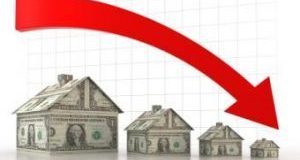Fannie Mae is now offering three solutions for borrowers with student loan debt. They will allow borrowers to exclude student debt in their debt-to-income ratio, let lenders accept student loan payments on credit reports, and allow borrowers to refinance in order to pay down student debts. Student loan debt is one of the biggest barries to homeownership today.
Read More »Rising Real Home Prices Impacted by Inventory
First American’s Real House Price Index (RHPI) for February 2017 showed home prices remaining strong. The low inventory has meant that home prices have remained high. Additionally, the RHPI noted that rising wages have offset the impact of rising home prices and mortgage rates on affordability. Wages have grown by 2.8 percent in February.
Read More »The Week Ahead: A Look at the Rising Prices
The S&P Corelogic Case-Shiller HPI covers 20 metropolitan areas across the U.S., and is released on the last Tuesday of every month. The previous HPI, covering January 2017, showed home prices at a 31-month high. During January, home prices were up 5.9 percent year-over-year and 5.7 percent month-over-month.
Read More »Applications and Rates Fall as Prices Grow
Though mortgage rates and applications are falling, home prices are rising. Freddie Mac’s House Price Index has shown a steady increase in prices over the last several months. The S&P CoreLogic Case Shiller Home Price Index has shown a similar trend. January’s Index reflected a 31-month high in home prices. During January, home prices were up 5.9 percent year-over-year and 5.7 percent month-over-month.
Read More »Mortgage Servicing Boost SunTrust’s Income
In its Q1 results, SunTrust Bank noted that higher mortgage-related income and investment-related income pushed the noninterest income up by $32 million. Mortgage servicing income posted a strong quarter, with a net income of $53 million over the previous quarter’s $25 million. Still, this was a decrease from the previous year’s Q1 income of $62 million.
Read More »The Environmental Costs of a Mortgage
According to new data, the mortgage industry costs the world 264,000 trees every year, thanks to its largely paper-driven processes. When the number of applications that don’t result in closings is considered, that number could even be conservative. The industry also consumes significant amounts of water, energy, and wood and results in greenhouse gas emissions.
Read More »Refis Continue Dip, FICO Scores Up
A new report shows refinancing is continuing its downward trend, declining for the third month in a row this year. Just 37 percent of all closed loans in March were refinance loans. The report also shows closing times down and FICO scores up, particularly on conventional loans.
Read More »Builders Expect Strong Years Ahead
According to a new survey, homebuilders are largely optimistic about the next two years, with 82 percent anticipating an uptick in residential construction over the period. Builders also expect most buyers to need 30-year loans or construction-to-permanent loans. The survey also polled builders on working with loan officers, buyer hurdles, and the impact of rising mortgage rates.
Read More »Inventory, Affordability Problems Can’t Keep Buyers Away
Home sales should remain strong as the year goes on, even despite rising mortgage rates, tight inventory, and declining affordability. Potential existing-home sales rose 0.6 percent over the year and 83 percent over their all-time high. Wage growth, strong employment, and an uptick in building permits will encourage sales further.
Read More »A Nation of Overleveraging
A new list reveals the country’s most overleveraged cities—areas where mortgage balances far outweigh home values and median incomes. San Luis Obispo, California, topped the list, with a mortgage debt-to-income ratio of more than 2,000 percent. The market’s historically low mortgage rates are likely to blame for overly ambitious buying.
Read More » theMReport.com Your trusted source for mortgage banking news
theMReport.com Your trusted source for mortgage banking news









